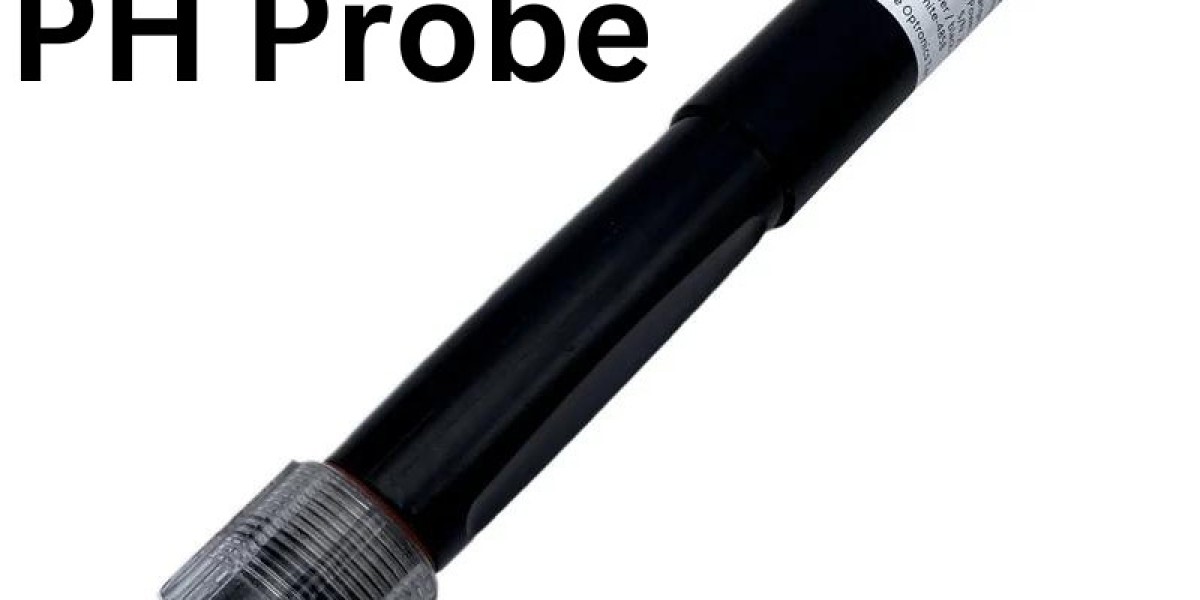1. Glass Electrode
The glass electrode is the heart of the pH probe, responsible for detecting the hydrogen ion concentration in a solution. It consists of a thin glass membrane that reacts with the solution's pH level. The glass is usually made from a special type of glass that has a high permeability to hydrogen ions, which allows it to produce a measurable voltage difference proportional to the pH level. This voltage is then converted into a readable pH value by the probe's electronics. The glass electrode is designed to be highly sensitive and accurate, ensuring reliable measurements across a wide pH range.
2. Reference Electrode
The reference electrode provides a stable reference potential against which the glass electrode's potential can be measured. It typically contains a stable reference solution, such as saturated potassium chloride (KCl), and a reference electrode material like silver/silver chloride or calomel. The reference electrode is crucial for maintaining the accuracy of pH measurements, as it ensures that the readings are not affected by changes in the electrode's internal conditions or the external environment. It acts as a baseline for comparison, ensuring that the glass electrode's measurements are consistent and reliable.
3. Junction
The junction, also known as the reference junction or liquid junction, is the point where the reference solution in the reference electrode comes into contact with the sample solution. It is usually made of a porous material or a ceramic that allows ions to flow between the reference electrode and the sample solution while preventing contamination. The junction is critical for ensuring proper ion exchange and maintaining the stability of the reference potential. A well-designed junction helps minimize junction potential errors and enhances the probe's performance.
4. Protective Shield
The protective shield surrounds the glass electrode and helps protect it from physical damage and contamination. It is often made of a durable material like plastic or metal and is designed to withstand harsh conditions and mechanical stress. The shield also prevents direct contact with the sample solution, which can help prolong the life of the glass electrode and maintain its accuracy. In some pH probes, the protective shield may include a diaphragm that regulates the flow of reference solution to the junction.
5. Temperature Sensor
Temperature can significantly affect pH measurements, so many pH probes include an integrated temperature sensor. This sensor measures the temperature of the sample solution and allows for temperature compensation. Since pH readings can shift with temperature changes, the temperature sensor helps adjust the pH value to account for these variations, ensuring accurate and consistent measurements. Temperature compensation is especially important in applications where precise pH control is crucial, such as in chemical manufacturing or environmental testing.
6. Cable and Connector
The cable and connector are essential for linking the pH probe to the measuring device or data logger. The cable transmits the electrical signals generated by the glass and reference electrodes to the connected instrument, where the pH value is displayed or recorded. The connector ensures a secure and stable connection between the probe and the measuring device, minimizing the risk of signal interference or loss. High-quality cables and connectors are designed to be durable and resistant to environmental factors like moisture and chemical exposure.
In summary, understanding the key components of a pH probe—the glass electrode, reference electrode, junction, protective shield, temperature sensor, and cable and connector—can significantly enhance its performance and accuracy. Each component plays a vital role in ensuring reliable pH measurements, making the pH probe a crucial tool in various scientific and industrial applications.



